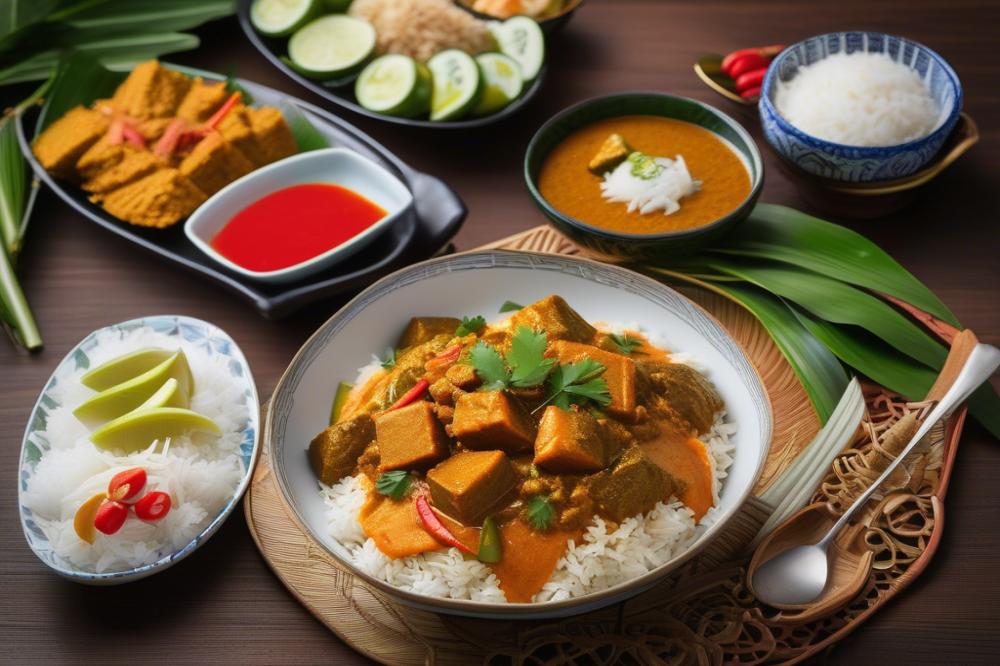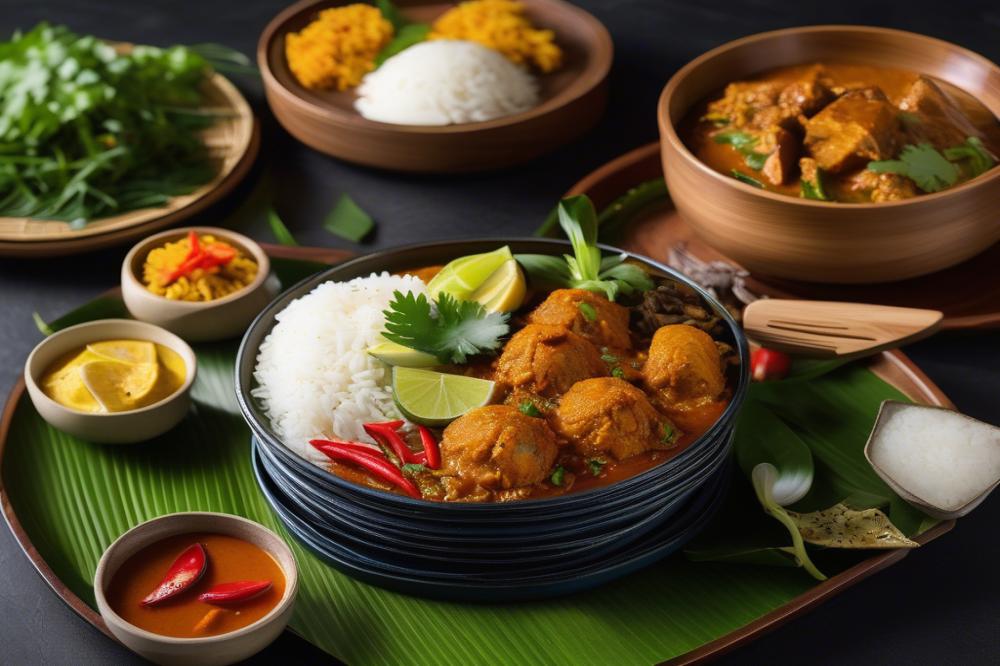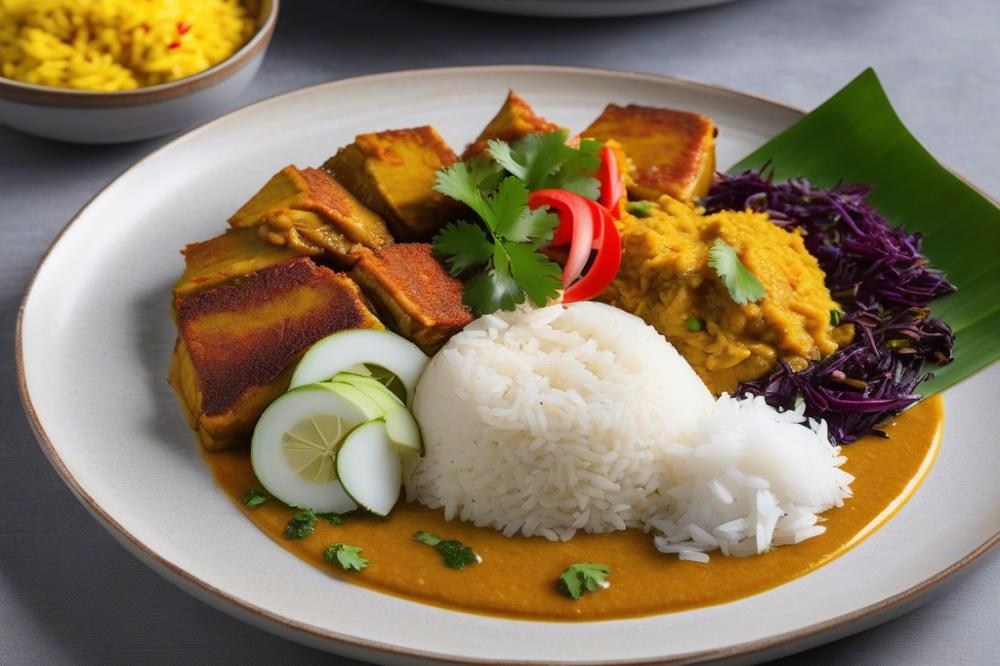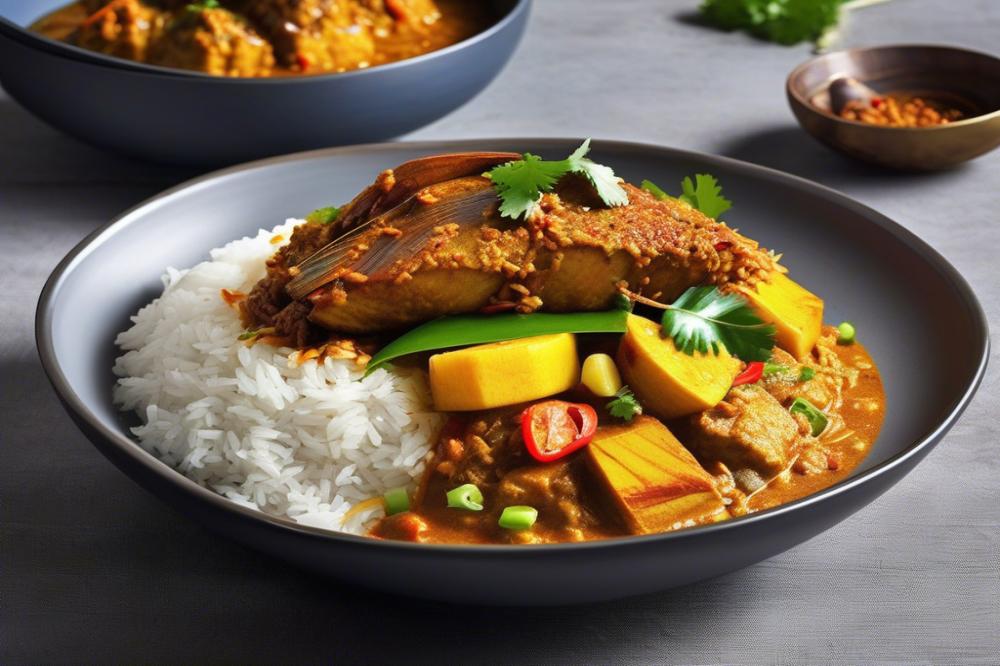Introduction
Nasi Dagang is more than just a breakfast dish in Malaysian cuisine; it represents a deep connection to cultural heritage. Known for its flavorful combination of aromatic rice and rich Fish Curry, this dish has become a staple in many households. It showcases the beautiful melding of ingredients often found in traditional recipes, making it a beloved choice for starting the day.
The history of Nasi Dagang is fascinating, as it traces back to the Terengganu region of Malaysia. Coastal fishing communities were known for their deep reliance on seafood, which influenced the flavors and techniques used in local cooking. Over time, this dish evolved, capturing not just the essence of the sea but also the diverse influence of Southeast Asian culinary traditions.
aromatic rice plays a vital role in this dish. It is commonly prepared with coconut milk, which adds a creamy texture and a hint of sweetness. This unique preparation elevates it beyond simple rice, turning each grain into a tiny burst of flavor. Paired with the rich Fish Curry, the dish becomes a hearty meal. The use of various herbs and spices also contributes to its delightful aroma and taste, creating an unforgettable gastronomic experience.
For many, enjoying Nasi Dagang in the morning is a cherished routine. Its nutritious ingredients make it perfect for breakfast, providing energy for the day ahead. Whether served at home or sold by street vendors, it reminds everyone of the simplicity and joy of traditional cooking.
What is Nasi Dagang?

Nasi Dagang is a delightful dish that showcases the flavors of Malaysian cuisine. It consists of aromatic rice cooked with coconut milk, giving it a rich and creamy texture. This rice is typically paired with a fish curry made from a blend of fresh seafood, herbs, and spices. The combination creates a dish that is both filling and satisfying, often served with pickled vegetables for a burst of tanginess.
This dish holds a special significance in Malaysian culture. Traditionally, it is enjoyed as a breakfast dish, especially in the northeastern regions of the country. Families often gather to share this meal, and it symbolizes warm hospitality. Alongside its nutritional value, Nasi Dagang carries memories of home-cooked meals passed down through generations. Many cherish the traditional recipes that have been preserved, highlighting the dish’s place in cultural heritage.
In comparison to other Malaysian dishes, Nasi Dagang stands out for its unique combination of flavors. While dishes like Nasi Lemak use a similar base of rice, the addition of coconut milk and the specific fish curry make it distinct. Additionally, Nasi Kandar, another popular meal, is typically heavier and richer, often featuring fried chicken and various curries. This variety showcases the diversity within Malaysian cuisine, where each dish contributes to the culinary landscape.
Ingredients and Cooking Instructions

List of Ingredients and Their Quantities
- 2 cups of aromatically scented rice (glutinous rice preferred)
- 1 can (400ml) of coconut milk
- 300g of tuna or mackerel, cleaned
- 1 onion, diced
- 3 cloves of garlic, minced
- 1 tablespoon of shrimp paste (belacan)
- Herbs: 2 stalks of lemongrass, 3 pandan leaves
- Spices: 2 teaspoons of turmeric powder, 1 teaspoon of chili powder, salt to taste
- Optional: sliced cucumbers and sambal on the side
Step-by-Step Cooking Instructions
Start by rinsing and soaking the aromatic rice for a few hours. This process enhances the texture of the rice and is essential in traditional recipes. While the rice soaks, prepare the fish curry. Sauté the minced garlic and diced onion in a pan over medium heat. The aroma will fill the kitchen and set the stage for the dish.
After the onions become translucent, add the shrimp paste and stir well. This ingredient gives the dish a unique flavor. Next, incorporate the spices, including turmeric and chili powder. They add warmth and depth to the curry. Pour in the coconut milk, creating a rich and creamy sauce.
Add the cleaned fish, letting it simmer gently. You want the flavors to blend thoroughly. Herbs like lemongrass and pandan leaves can enhance the aromatic quality of the dish, giving it a delightful fragrance. Simmer until the fish is cooked through and the sauce thickens slightly.
Nutritional Information of Each Ingredient
Coconut milk is known for its healthy fats. It provides energy and has numerous benefits. Fish, whether tuna or mackerel, offers protein and essential omega-3 fatty acids. These are vital for heart health. Garlic and onions contribute antioxidants, supporting overall wellness.
Various spices used in Malaysian cuisine have anti-inflammatory properties. Turmeric stands out for its powerful benefits. Eating this breakfast dish provides a good balance of nutrients. Optional garnishes like sliced cucumbers add freshness and crunch, making the meal even better.
Cultural Significance of Nasi Dagang

Role in Malaysian Breakfasts
Nasi Dagang is a beloved breakfast dish in Malaysia. Many people enjoy it as a satisfying way to start their day. Often, it is served with a side of fish curry, bringing vibrant flavors to the morning meal. Locals appreciate the combination of aromatic rice and rich, spicy seafood. When families gather for breakfast, this dish becomes a symbol of togetherness and shared culture.
A Reflection of Cultural Heritage
This dish embodies the cultural heritage of the Malaysian people. Traditional recipes have been passed down through generations, showcasing the country’s unique blend of influences. Many cooking methods incorporate coconut milk, herbs, and spices that highlight the rich agricultural bounty of the region. Enjoying Nasi Dagang connects people to their roots and traditions, creating a bond with their history.
Regional Variations Across Malaysia
Throughout Malaysia, adaptations of Nasi Dagang can be found. Each region puts its own twist on the dish, using local ingredients and distinct cooking styles. For example, some areas may favor a spicier curry, while others highlight a milder flavor. Additionally, variations exist in the way the aromatic rice is prepared, with certain regions opting for different methods. These changes demonstrate the diversity of Malaysian cuisine and how the dish continues to evolve while remaining cherished by many.
Tips for Easy Cooking
Quick Preparation Tips for Beginners
Getting started can be simple. First, gather all ingredients before cooking. This practice helps keep things organized. Use pre-measured spices and herbs to save time. Instead of chopping everything fresh, consider using dried herbs. They can add flavor without extra effort. For the rice, rinsing it well before cooking removes excess starch. This step guarantees that the grains remain fluffy. Finding a good recipe online can also guide you through traditional recipes. Don’t hesitate to use shortcuts, like store-bought curry pastes. They are a convenient way to pack in those Malaysian flavors with less hassle.
Suggested Side Dishes That Complement Nasi Dagang
Pair your dish with a variety of side options. A simple cucumber salad can add a refreshing touch. The crunchiness of cucumbers balances the richness of coconut milk. Fried fish or prawns also work well. Seafood enhances the overall meal’s experience. You can even serve it with hard-boiled eggs for an added protein boost. If looking for something light, try a side of stir-fried greens. These not only add color to the plate but also plenty of nutrients.
How to Store and Reheat Leftovers Effectively
Leftovers can be enjoyed later if stored properly. Place excess rice and curry in airtight containers to keep them fresh. Storing separately is key; this prevents the rice from getting mushy. When ready to eat, reheat the rice using a microwave. Sprinkle a little water over it to maintain moisture. For the curry, stovetop reheating offers a richer flavor compared to microwaving. Keep it low and slow; this helps preserve the essence of the spices. Enjoying leftovers the next day can still bring the same excitement as the first time.
Final Thoughts on a Malaysian Classic
Nasi Dagang holds a special place in Malaysian cuisine, celebrated for its rich flavors and vibrant presentation. This dish is more than just a meal; it reflects the traditions and cultural heritage of the Malaysian people. Each bite of fragrant, aromatic rice paired with spicy fish curry tells a story of local ingredients and culinary techniques passed down through generations.
Trying your hand at this recipe can be a delightful experience. The process may seem daunting at first, but the steps are easy to follow. The blend of spices and the balance of flavors will elevate your dining experience. Cooking this dish not only fills your stomach but also introduces you to an essential part of Malaysia’s food culture.
Exploring traditional recipes like this one is an invitation to connect with cultural traditions. By preparing these dishes, you contribute to preserving the culinary heritage of your community. Sharing them with friends and family can spark conversations about history and customs. So, gather your loved ones in the kitchen, and dive into these culinary adventures. You might just find a new favorite dish along the way.



